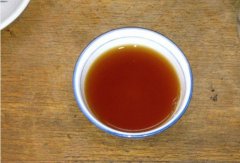[coffee Encyclopedia] teaches you to distinguish the quality of coffee beans

For professional baristas, please follow the coffee workshop (Wechat official account cafe_style)
Most people do not have much contact with coffee, and it is very rare to be able to identify the type of coffee from coffee beans. Even if you are lucky enough to know coffee, you may not go through everything from beans to liquids. Coffee is good and bad, so how can we identify it?
1. Microclimate where coffee beans grow.
Coffee comes in many shapes and sizes, and although most of them are the same shape, it is best to grow specific varieties according to different local microclimates. The best farmers will adjust measures to local conditions.
2. Picking time
At the end of the harvest season, coffee beans are picked before they are fully ripe in preparation for the next season. Most of these coffee beans are classified as bad varieties called "subgrade" because they are not ideal.
3. Do you want to highlight the ideal features or cover up the defects in the baking process?
Not to mention that any roaster, even ordinary people, can produce dry, gray and dark coffee. This is a way to cover up defects, to produce more complex fruity or caramel-flavored coffee, high-quality coffee beans and attention to detail are indispensable.
4. The degree of attentiveness in drying
Once the coffee beans are picked, there are several different ways to dry the beans. The easiest way is to leave them outside for a few weeks, or use an expensive dryer. High-quality coffee beans are tested at any time to make sure they don't get moldy, while poor ones are left unattended in the sun because labor costs are too high.
5. Whether the coffee is cooled with water
There are too many coffee beans roasted at one time in a large coffee roaster, so it is impossible to use air to cool down, and it is necessary to spray water mist quickly inside. Although there is no obvious data, many bakers believe that although the water evaporates quickly, if the water comes into contact with the coffee beans, it will reduce the overall quality.
6. The quantity of coffee purchased by the roaster
From the perspective of farm grade, there is a direct relationship between quality and quantity. The quantity of high-quality coffee in the world is by no means sufficient for large roasters. Small companies can buy 5-10 bags, as well as other high-quality coffee for limited or small-scale operations, but these quantities are far less than a batch order from a large roaster. Once a roaster reaches a certain scale, their ability to provide high-quality coffee is greatly reduced.
7. Storage time
If the coffee beans used in the coffee shop come from a good local baker, they are coffee beans within a week, which ensures freshness. Different from coffee beans from big brands but not of high quality.
8. Quality or quantity
In order to expand the scale, many manufacturers will eventually sacrifice quality because of the quantity of production. When roasting coffee beans for £2 million a week, there is no time for subtleties.
9. Analysis of coffee aroma
What makes coffee special is its fragrance. Although professional bakers often think it silly to take taste notes, if a company uses general terms such as "smooth" or "blod", it shows that they are not trying to present more subtle features.
Freshness is the life of coffee, the best drinking period of roasted coffee beans is 45 days, while the best drinking period of ground powder is only 30 days, how to determine the freshness of coffee beans?
There are three steps: smell, see, and peel:
Smell: put the coffee beans close to the nose and smell them deeply to see if you can clearly smell the aroma of the coffee beans. If so, the coffee beans are fresh enough. On the contrary, if the aroma is weak, or has begun to appear greasy, it means that the coffee beans are not fresh at all.
Look: spread the coffee beans on your hands, determine the origin and variety of coffee beans, and determine whether the coffee beans are roasted evenly.
Peel: take a coffee bean and try to peel it off by hand. if the coffee bean is fresh enough, it should be easy to pull away, and it will have a crisp sound and feeling. If the coffee beans are not fresh, you will find that you have to work hard to get rid of a bean.
What is the relationship between the oil of coffee beans and the freshness of coffee beans?
Should we buy coffee beans that have "oil" or "no oil" in appearance?
Have you ever seen oily coffee beans? Why do some coffee beans have a shiny surface, while others are "dry and comfortable" without greasy? What is the relationship between the "oil" of coffee beans and the freshness? Should we buy coffee beans that are "oily" or "unoiled" in appearance?
Coffee oil that is not oil.
These "oils" distributed evenly on the surface of coffee beans are actually not "oils", but water-soluble organic substances that look like oils. "Coffee oil" itself contains many aroma ingredients of coffee, which can be dissolved in water, so the surface of your brewed coffee will not be covered with greasy oil.
There are two reasons for "oily beans".
There are two reasons for "oily beans". A) stale shallow baked beans b) fresh deep baked beans. The following in-depth discussion.
A) stale shallow baked beans
The light roasted beans, which are light in heat and light brown in appearance, are dry and will not produce oil after baking. About five days after it comes out of the oven (it may be shortened to one or two days at the height of summer), the phenomenon of "spot oil" begins to appear (dotted oil droplets appear on one side of the coffee bean) Please note: a little "spot oil" does not mean it is not fresh. sometimes the flavor of light-roasted coffee beans is at its peak. Continue to put, more than two weeks after the oven, the surface of shallow baked beans gradually covered with a uniform, thin and bright oil, the smell is not sweet, but with fuel consumption, at this time, the flavor of "shallow baked beans" has gone downhill and should be avoided.
B) fresh deep baked beans
The deep-baked beans with dark brown appearance show a slight glossy appearance after baking, and a large amount of oil begins to appear on the surface from the first day to the second day. The bright-looking "deep-baked beans" do not mean that they are not fresh. on the contrary, after three weeks of baking, the deep-baked beans will gradually dry out and eventually become dry-looking off-flavor beans. Therefore, if you see coffee beans that are dry but dark brown in appearance, please pay special attention to whether they are marked with a baking date and are most likely to be stale beans that have gone bad.
Important Notice :
前街咖啡 FrontStreet Coffee has moved to new addredd:
FrontStreet Coffee Address: 315,Donghua East Road,GuangZhou
Tel:020 38364473
- Prev

[coffee roasting] Fire throttle control of roaster (4) | Coffee workshop
Communication of professional baristas Please follow the coffee workshop (official Wechat account cafe_style) when dehydration goes through to the change of raw beans to yellow, indicating that a series of chemical reactions such as Maillard reaction, which are crucial to the production and transformation of coffee flavor substances, begin to take place actively. However, at this time, it is not said that the dehydration of raw beans stops, but the baking process begins to change by mainly removing the moisture of raw beans.
- Next

The benefits of coffee: coffee can improve brain performance and agility
Both employers and employees are used to reaching for a caffeinated drink when they need a little energy. Some people may prefer to get caffeine from sodas and energy drinks, but most consumers prefer to drink coffee directly. This dependence is likely to be caused by caffeine and seems to have an effect on mental agility and performance. What are the disadvantages?
Related
- Beginners will see the "Coffee pull flower" guide!
- What is the difference between ice blog purified milk and ordinary milk coffee?
- Why is the Philippines the largest producer of crops in Liberia?
- For coffee extraction, should the fine powder be retained?
- How does extracted espresso fill pressed powder? How much strength does it take to press the powder?
- How to make jasmine cold extract coffee? Is the jasmine + latte good?
- Will this little toy really make the coffee taste better? How does Lily Drip affect coffee extraction?
- Will the action of slapping the filter cup also affect coffee extraction?
- What's the difference between powder-to-water ratio and powder-to-liquid ratio?
- What is the Ethiopian local species? What does it have to do with Heirloom native species?

